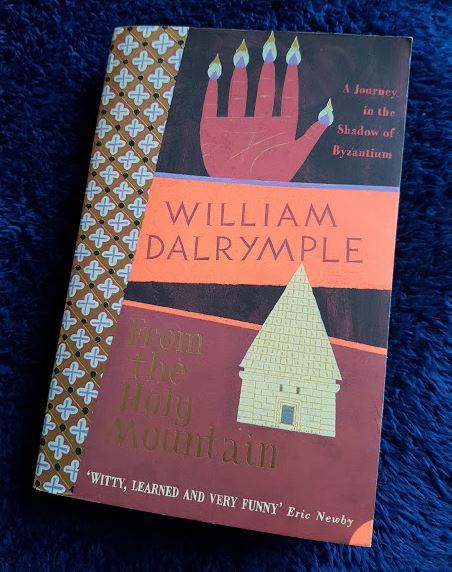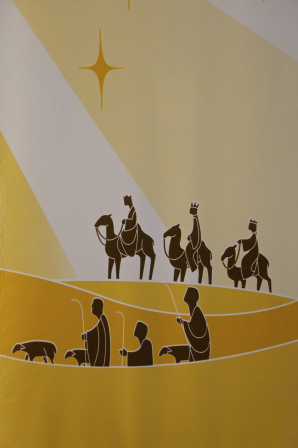Christmas is done for another year and we are coming to the end of that strange hiatus before the new year begins and life gets going in earnest again.
It has been four years since I spent a Christmas at home and flying solo meant that I could plan a completely selfish day, with absolutely no-one to please but myself. The day was filled with favourites: foodie treats (croissants – check, duck-fat roasted potatoes – check, Pat’s mango fruitcake – check), chats with loved ones Down Under and some Singin’ in the Rain (so full of joy and well, Gene Kelly peeps, what’s not to like *sigh*). There was also a luscious stretch of comfy-couch reading and some seasonal happy telly in the form of the Strictly Come Dancing and Great British Bake-off Christmas specials.
This year, the big day also fell smack-bang in the middle of a marvellous six days cocooned at home. I spent many glorious hours snuggled under a cosy throw catching up on movies I’d meant to see and snacking on cheese and home-made fruitcake (not together). And there was plenty of time to indulge in my favourite thing to do – reading. As far as I am concerned, there’s nothing like losing yourself in a good book and for six days, I found myself utterly engrossed in a tale of adventure, mysticism and history – From the Holy Mountain by William Dalrymple.

When From the Holy Mountain was published twenty years ago in 1997, I had just started travelling. Egypt had been a passion of mine since I was 14 years old, so much so that a career as an archaeologist had held quite some allure. Unlike others I knew who’d set off post-Uni to backpack around Europe, I went to work, saved my pennies and splashed it all on an escorted group tour through Egypt.
Over two mind-blowing weeks, our tour group travelled between Luxor and Aswan listening to stories of ancient rituals and dynasties, wandering through temples and bazaars and scrutinising endless statues and heiroglyphics. We then returned to Cairo for a couple of days and early one morning four of us took a camel ride up through the dusty streets and around the great stone peaks of the world’s most famous tombs, the mighty Pyramids of Giza.
The next day our bus made a stop there on the way back from Memphis and when our guide mentioned that we’d have enough time to go inside, I jumped at the chance. To my astonishment, the rest of the group elected to stay by the bus taking photos so I joined the file of tourists entering the shaded entrance and climbed determinedly up the stone ramp to the inner chamber.
After fifteen minutes the corridor narrowed until it was only wide enough for one person to pass through. I waited patiently until it was my turn to ‘duck-walk’ under the couple of metres of low ceiling-ed passage before the chamber. I stood, stretched my legs gratefully and moved away from the entrance to let a waiting group leave. As the last person crouched into the low space behind me, their exit stemmed the incoming flow of visitors for a couple of minutes and I was left alone in the chamber. In the dim light, a broken sarcophagus hunched darkly to my right as I gazed upwards to the chamber roof soaring above me. My skin prickled and I stood awestruck by the stillness, by the silence and by the sheer moment of standing under something built 4,500 years ago.
Had I read Dalrymple’s tale back then, I would probably have wanted to spend much longer and venture much further afield than my two weeks allowed. Twenty years later, the part of the world he writes about in From the Holy Mountain fascinates me. It was home to the grand and glittering Byzantium, an empire that stretched from Greece and through Constantinople (now Istanbul), crossing the Bosphorus into the vastness of eastern Turkey, turning south through Syria, Lebanon, Israel and Palestine and finally swinging west across the Sinai Desert into Egypt.
Following in the footsteps of two 6th century monks, Dalrymple’s memoir took me on a five month pilgrimage from Mt Athos in Greece to the Great Kharga Oasis in Upper Egypt. His historic references and stories – taken from accounts of John Mochos and Sophronius’ journey – added a fascinating richness but more than that, Dalrymple’s vivid prose brought to life the distinctive landscapes and peoples he encountered along the way. Scattering these amongst his own discussions, interviews and reflections created this wonderful sense of being alongside him as he travelled. This was his pilgrimage, a chance to slake his obsession with the monks’ journey he had read about years before – and it reminded me of mine taken in the shadow of a 13 year love affair with Egypt all those years ago (albeit mine being much shorter than his).
I stayed buried in Dalrymple’s story of civil wars, displaced peoples and sacred places for almost a week, the memories of my first adventure flooding back and the itch to travel welling inside me. I felt like I was on a wonderful journey and that my life was richer for having read this book. As I closed the final page and added this extraordinary travel memoir to my literary favourites, I made myself a couple of resolutions – to learn more about these ancient worlds and to get Dalrymple’s In Xanadu onto my to-read list.
So here’s to a 2018 full of sacred places to discover and new worlds to explore – have yourselves a happy new year peeps!
Share this:




